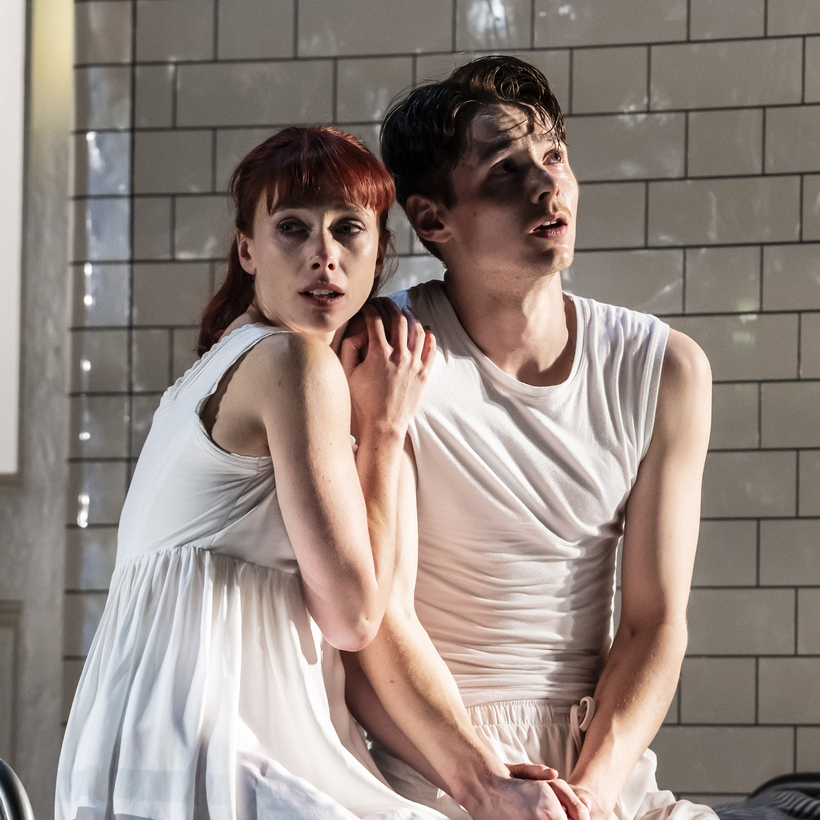Gut-wrenching, visceral, all-consuming—nothing packs a punch like young love. In the U.K. revival of Matthew Bourne’s 2019 Romeo and Juliet, now on at Sadler’s Wells through September 2, the choreographer suggests that Shakespeare’s star-crossed teens may actually be mentally unbalanced. So instead of working within the usual paradigm of violent pride, patriarchy, and fate, he transports us to the highly policed and overmedicating Verona Institute, a place for troubled youth. Frankly, it’s surprising it took so long for someone to make this leap. But then, ever since he wowed the world with his all-male Swan Lake of 1995, Bourne and his genre-bending company, New Adventures, have made it their mission to reimagine overworked ballets in fresh ways.
With no dynastic family feuds to navigate, this Romeo and Juliet interrogates mental illness and its attendant tragedies. Bourne deftly upends and re-arranges the characters and plot for this purpose. Tybalt is still the primary antagonist but is now a brutal orderly. Mercutio and Balthasar are an incarcerated gay couple, and Friar Laurence is reincarnated as the resident female chaplain, among other revisions. Romeo is a twitchy A.D.H.D. type who’s been dumped at the institute by his politician parents. Juliet is an abused victim of the system, in the clutches of the monstrous Tybalt. A shocking new ending is perhaps the most radical departure from the familiar versions. Add in Terry Davies’s jolting, almost atonal adaptation of Sergei Prokofiev’s original score and Lez Brotherston’s glossy, white-tiled set—clinical and oppressive—and you feel you’re seeing Romeo and Juliet for the first time.

But it is Bourne’s choreographic deliberation that renders this production worthy of acclaim. His phrasing is primarily deployed as a vehicle for exposition, not just a showcase of gymnastic feats. And his dancers are afforded the chance to actually act onstage—a rarity in so much contemporary ballet. Major choreographic landmarks are reimagined for Bourne’s narrative. For instance, the lyrical balcony pas de deux has become a vulnerable bodily dialogue between the two lovers, one that betrays their mental fissures. And the explosive ensemble dances of the corps are no longer expressions of family might and right—think inmates climbing the walls, sexually frustrated teenagers grappling with their tortured minds.
The ballet’s 2019 premiere received high praise from most quarters. Much was made of the youth and vitality of the dancers, a mix of Bourne’s own touring troupe and local pre-professional dancers, all of whom kept up with the high-octane pace of the storytelling. The brilliant Cordelia Braithwaite and Paris Fitzpatrick have returned as Juliet and Romeo. And the (very) young Arielle Smith, Bourne’s associate choreographer on this ballet, should keep everyone on their toes. She won her first Olivier in 2022, at just 25.
Romeo and Juliet is on at Sadler’s Wells, in London, through September 2. It’s also available to watch on Amazon Prime
Genevieve Marks is a London-based dance critic, feature writer, and choreographer. She is also a recovering former ballet dancer


